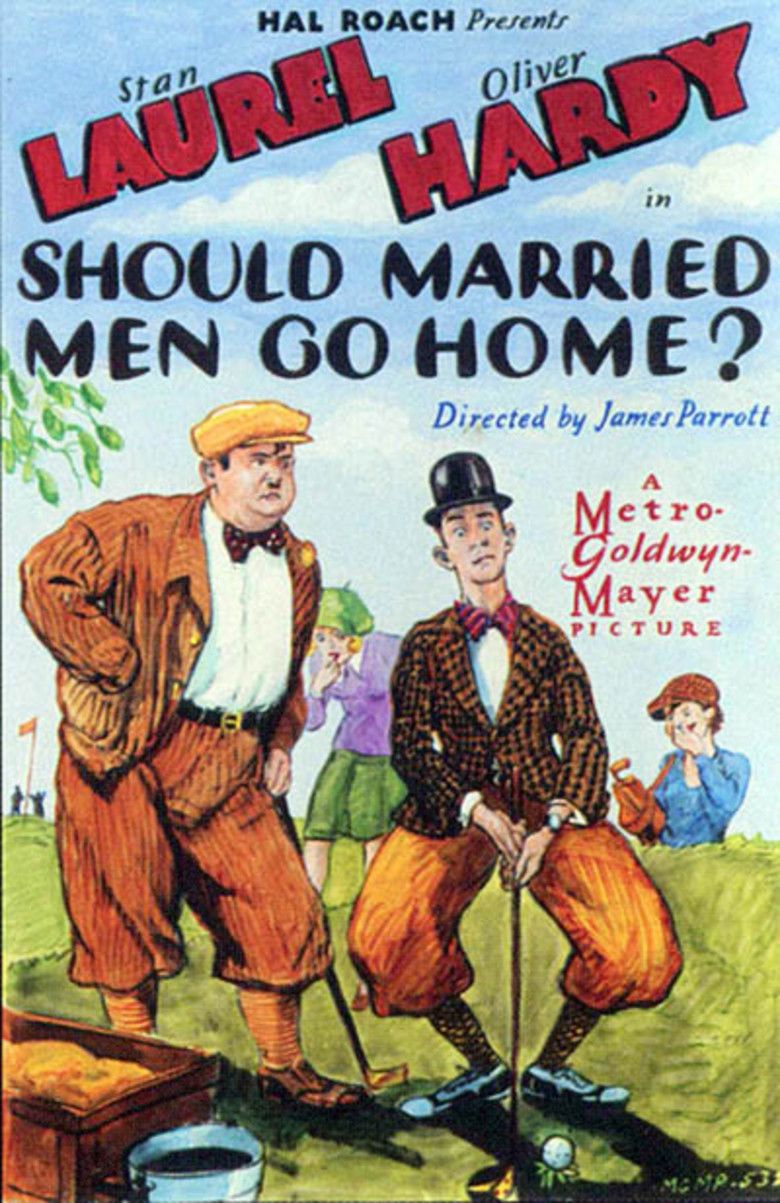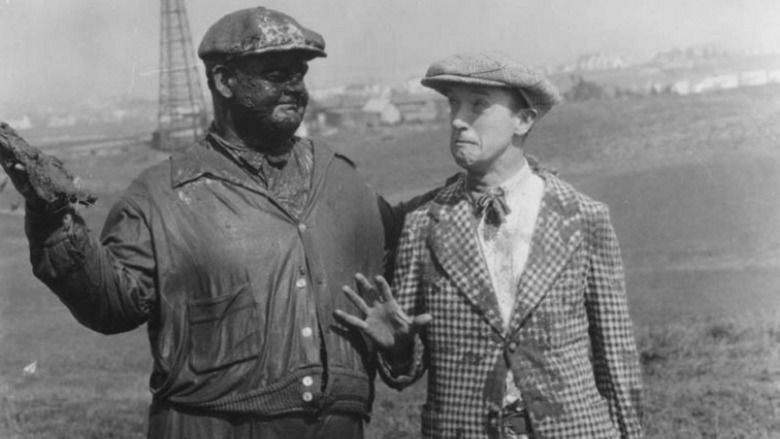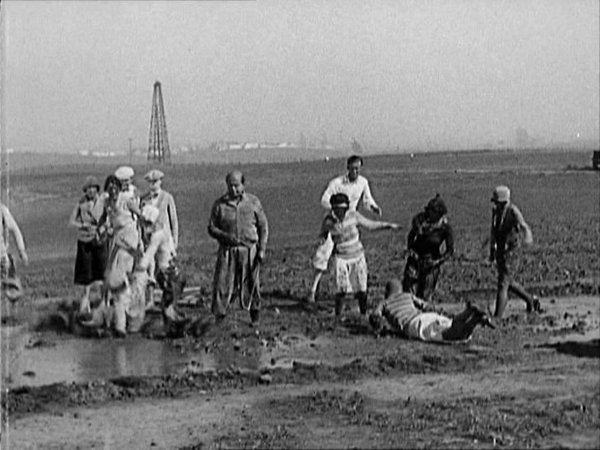Should Married Men Go Home
7 /10 1 Votes
Film series Laurel and Hardy Series | 7/10 IMDb Genre Comedy, Short Duration Country United States | |||||||||||||||||||||||||||||||||
 | ||||||||||||||||||||||||||||||||||
Language Silent film
English intertitles Director Leo McCarey
James Parrott Writer James Parrott , H.M. Walker Release date September 8, 1928 (1928-09-08) Directors Leo McCarey, James Parrott Screenplay Leo McCarey, James Parrott, H. M. Walker Cast Stan Laurel (Stan), Oliver Hardy (Ollie), Kay Deslys (Mrs. Hardy (uncredited)), Edgar Kennedy (Golfer (uncredited)), Charlie Hall (Soda Jerk (uncredited)), Sam Lufkin (Shop Manager (uncredited))Similar movies Pacific Rim , Paperman , Feast , El nudista , Hierba , The Artist | ||||||||||||||||||||||||||||||||||
Laurel (Stan Laurel) and Hardy (Oliver Hardy) go the the golf course and try to impress the ladies.
Contents
- Plot
- Cast
- Supporting cast
- Routines for the future
- Out on the links
- Title and industry excitement
- Critical reputation
- References

Should Married Men Go Home? is a silent two-reel comedy produced by the Hal Roach Studios and starring Laurel and Hardy. It was filmed in March and May 1928, and released by Metro-Goldwyn-Mayer on September 8 of that year. It was the first Roach film to bill Laurel and Hardy as a team—previously, their appearances together were under the Roach "All-Star Comedy" banner. Footage of the film featuring Laurel and Hardy on location in between shooting and some apparent out-takes has recently surfaced on YouTube.

Mrs. Hardy throws Ollie and Stan out of the house. They try to impress two young ladies at a golf course and end up fighting with other golfers. This was the first Hal Roach film to bill Laurel and Hardy as a team.
Plot
Ollie and his wife are enjoying a quiet Sunday at home until Stan shows up, eager to play some golf. After Stan breaks the Hardys Victrola and nearly sets fire to their house, Mrs. Hardy chases the boys out. At the golf course, they are partnered with a pair of comely young lasses to complete a foursome. The girls want to be treated to sodas, but the boys are short of money. Stan leaves his watch to settle the thirty-cent bill. On the course, they tangle with rude golfer Edgar Kennedy, and wind up in a mud-throwing battle with several other linksters.
Cast
Supporting cast
John Aasen was (un)credited as "Very Tall Golfer" and it was indeed typecasting: Aasen was 8-foot-9.
Golf course girlfriends Edna Marion and Viola Richard had both been notified that Should Married Men Go Home? would be their last outing for the Hal Roach Studios — that their contracts would not be renewed. Marion had appeared in nearly fifty films, most for Roach, yet would go on to appear in only a half-dozen Poverty Row productions; she would be completely out of pictures by 1932. Viola Richard had enlivened several Charley Chase and Laurel and Hardy silent comedies before Married Men, yet would see service only twice more — both in 1935, both for Roach, both only as an extra; perhaps it was her considerable resemblance to "It Girl" Clara Bow that held her back in casting offices.
Routines for the future
The soda fountain routine — funny here in silent guise — would be reworked with sound and become even better a year later in the L&H talkie Men O War. Jimmy Finlayson would take over dispensing duties from Charlie Hall in the talkie.
The gag of Stan slipping a note under the door, only to see it get pulled further in from the inside where the Hardys are hiding from him, would find new life and a return engagement in the 1931 talkie Come Clean when the Hardys again pretend not to be home when the Laurels come calling.
Out on the links
Oil derricks are visible just off some of the fairways on the golf course.
Should Married Men Go Home? slots right in with the L&H shorts of its era as far as the pattern of action at the finale: a widening circle of anarchy and mayhem envelops The Boys, the bystanders and everyone in between. Mud is the aggressive instrument of choice in Married Men, while in Youre Darn Tootin its ripped pants, pies in The Battle of the Century and auto parts in Two Tars.
Title and industry excitement
As was typical, the project had a working title: this ones was Follow Through. Also typically, it was H. M. "Beanie" Walker who wordsmithed the final release title.
The time lag between the primary filming in March and the September release of Should Married Men Go Home? was unusually long—some six months—and included some summer vacation "away time." When the company reconvened in Los Angeles in Autumn 1928, the fame and popularity of the Laurel and Hardy team had charged up the town. L&H historian Randy Skretvedt notes that:
"By the time the film was released on September 8, L&H had become tremendously popular. MGMs publicity department began issuing billboard-sized posters to publicize the team. If this was an uncommon practice for a series of short subjects, MGM felt the team deserved the extra fanfare."Critical reputation
Laurel and Hardy authors and critics are strangely silent on Should Married Men Go Home? Despite its inclusion in 1967s feature-length compilation The Further Perils of Laurel and Hardy, it is today either overlooked or underappreciated; the best that prolific commentator Leslie Halliwell can muster for it is a lukewarm "Goodish star slapstick, but the preliminary domestic scene is the funniest."
The lone exception to this is early L&H analyst William K. Everson who wrote (perhaps not coincidentally) in 1967: "One of the best of the "forgotten" Laurel and Hardy films, Should Married Men Go Home? admittedly overlaps with several other of their films but is no less funny because of it." He cites Ollies collapsing of the front fence, the soda fountain routine and Edgar Kennedys toupee woes as high spots.
References
Should Married Men Go Home? WikipediaShould Married Men Go Home%3F IMDb Should Married Men Go Home themoviedb.org
